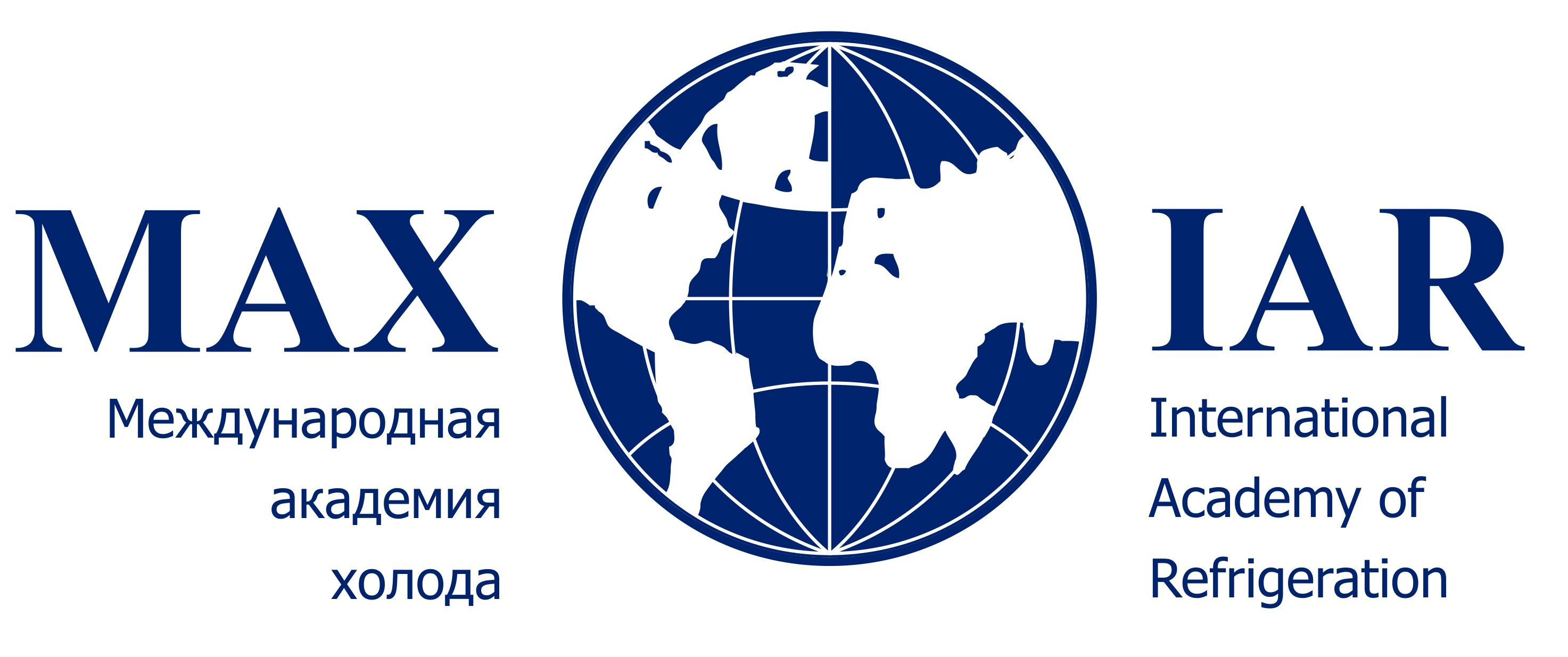1. Patel G. et al.Different parameters affecting the efficiency of dryers. Drying Technology in Food Processing. Woodhead Publishing. 2023. p. 705-742.
2. Рудобашта С.П.Современное состояние и направления развития теории и практики сушки. // Современные энергосберегающие тепловые технологии (сушка и тепловые процессы) СЭТТ - 2020: Сборник научных трудов Седьмой Международной научно-практической конференции, посвященной 110-летию со дня рождения Академика А.В. Лыкова, Москва, 13–15 октября 2020 года. Москва: Мегаполис, 2020. С. 13-22. [Rudobashta S.P.Current state and directions of development of the theory and practice of drying / S.P. Rudobashta. Modern energy-saving thermal technologies (drying and thermal processes) SETT - 2020: Collection of scientific papers of the Seventh International Scientific and Practical Conference dedicated to 110-anniversary of the birth of Academician A.V. Lykova, Moscow, October 13–15, 2020. Moscow: Megapolis. 2020. p. 13-22. (in Russian)]
3. Menon A., Stojceska V., Tassou S.A. A systematic review on the recent advances of the energy efficiency improvements in non-conventional food drying technologies. Trends in Food Science & Technology. 2020. Vol. 100. p. 67-76.
4. Llavata B. et al.Innovative pre-treatments to enhance food drying: A current review. Current Opinion in Food Science. 2020. Vol. 35. p. 20-26.
5. Orrego C.E., Salgado N., Sarmiento L.F.Freeze drying and vacuum drying.Drying Technology in Food Processing. 2023. p. 203-240
6. Лифенцева Л.В.Оптимизация технологии вакуумной сушки сельскохозяйственного сырья растительного происхождения / Л.В. Лифенцева, А.Н. Расщепкин, Е.Н. Неверов [и др.] // Вестник Алтайского государственного аграрного университета. 2022. № 2(208). С. 82-89. [Lifentseva L.V.Optimization of technology for vacuum drying of agricultural raw materials of plant origin / L.V. Lifentseva, A.N. Rasshchepkin, E.N. Neverov [et al.]. Bulletin of the Altai State Agrarian University. 2022. №. 2(208). P. 82-89. (in Russian)]
7. Acar C., Dincer I., Mujumdar A.A comprehensive review of recent advances in renewable-based drying technologies for a sustainable future. Drying Technology. 2022. Vol. 40. No 6. p. 1029-1050.
8. Huang D. et al.Application of infrared radiation in the drying of food products. Trends in Food Science & Technology. 2021. Vol. 110. p. 765-777.
9. Chojnacka K. et al.Improvements in drying technologies-Efficient solutions for cleaner production with higher energy efficiency and reduced emission. Journal of Cleaner Production. 2021. Vol. 320. р. 128706.
10. Hii C.L. et al.Hybrid drying of food and bioproducts: A review. Drying Technology. 2021. Vol. 39. No 11. Р. 1554-1576.
11. Radojčin M. et al.Effect of selected drying methods and emerging drying intensification technologies on the quality of dried fruit: A review. Processes. 2021. Vol. 9. No 1. p. 132.
12. Waghmare R.B. et al.Trends in approaches to assist freeze-drying of food: A cohort study on innovations. Food Reviews International. 2022. Vol. 38. no sup1. p. 552-573.
13. González-Cavieres L. et al.Advances in vacuum microwave drying (VMD) systems for food products. Trends in Food Science & Technology. 2021. Vol. 116. p. 626-638.
14. Fathi F. et al.Emerging drying techniques for food safety and quality: A review. Comprehensive Reviews in Food Science and Food Safety. 2022. Vol. 21. No 2. p. 1125-1160.
15. Bozkir H.Effects of hot air, vacuum infrared, and vacuum microwave dryers on the drying kinetics and quality characteristics of orange slices. Journal of Food Process Engineering. 2020. Vol. 43. No 10. p. e13485.
16. Teleken J.T. et al.Mechanistic understanding of microwave-vacuum drying of non-deformable porous media. Drying Technology. 2021. Vol. 39. no. 7. p. 850-867.
17. Principato L., Spigno G.Microwave heating in food processing. Food Packaging and Preservation. Academic Press. 2024. p. 299-329.
18. Monteiro R.L. et al.Microwave vacuum drying of foods with temperature control by power modulation. Innovative Food Science & Emerging Technologies. 2020. Vol. 65. p. 102473.
19. An N. et al.Factors affecting energy efficiency of microwave drying of foods: An updated understanding. Critical Reviews in Food Science and Nutrition. 2022. p. 1-16.
20. Salehi F.Recent applications of heat pump dryer for drying of fruit crops: A review. International Journal of Fruit Science. 2021. Vol. 21. No 1. p. 546-555.
21. Патент на полезную модель № 212283 U1 Российская Федерация, МПК F26B 15/06, F26B 5/04, F26B 3/30. А.А. Попов. Устройство инфракрасной вакуумной сушки: № 2022104112: заявл. 16.02.2022: опубл. 13.07.2022. [Utility Model Patent No. 212283 U1 Russian Federation, IPC F26B 15/06, F26B 5/04, F26B 3/30. A.A. Popov. Infrared vacuum drying device: No. 2022104112: application 02/16/2022: publ. 07/13/2022.(in Russian)]
22. Delfiya D.S.A. et al.Drying kinetics of food materials in infrared radiation drying: A review. Journal of Food Process Engineering. 2022. Vol. 45. no 6. p. 13810.
23. Ye L. et al.Analysis of energy and specific energy requirements in various drying process of mint leaves. Case Studies in Thermal Engineering. 2021. Vol. 26. р. 1113.
24. Zhang W.P. et al.Design and performance evaluation of a pilot-scale pulsed vacuum infrared drying (PVID) system for drying of berries. Drying technology. 2020. no 10. p. 1340-1355.
25. Качанов А.Н.Исследование возможности применения ваккуумно-высокочастотной технологии для сушки деревянных опор / А.Н. Качанов, Д.А. Коренков, В.В. Максимов, О.В. Воркунов // Вестник ПИТТУ имени академика М.С. Осими. 2021. № 1(18). С. 42-52. [Kachanov A.N. Study of the possibility of using vacuum-high-frequency technology for drying wooden poles / A.N. Kachanov, D.A. Korenkov, V.V. Maksimov, O.V. Vorkunov. Bulletin of PITTU named after the academician M.S. Oshimi. 2021. no 1(18). p. 42-52.(in Russian)]
26. Иванова Э.С.Инновационные конструкции и технологии сушки плодоовощной продукции / Э.С. Иванова, Ю.В. Родионов, О.А. Зорина [и др.] // Наука в центральной России. 2021. № 1(49). С. 43-53. [Ivanova E.S. Innovative designs and technologies for drying fruit and vegetable products / E.S. Ivanova, Yu.V. Rodionov, O.A. Zorina [et al.]. Science in Central Russia.2021. no 1(49). p. 43-53. (in Russian)]
27. Патент № 2716056 C1 Российская Федерация, МПК F26B 17/10, F26B 5/04. Энергоэффективная конвективно-вакуум-импульсная сушильная установка с тепловыми аккумуляторами: № 2019106971: заявл. 13.03.2019: опубл. 06.03.2020 / А.С. Зорин, И.В. Иванова, Д.В. Никитин [и др.]; заявитель ФГБОУ ВО "ТГТУ". [Patent No. 2716056 C1 Russian Federation, IPC F26B 17/10, F26B 5/04. Energy-efficient convective vacuum pulse drying unit with thermal accumulators: No. 2019106971: application 13.03.2019: publ. 06.03.20 / A.S. Zorin, I.V. Ivanova, D.V. Nikitin [et al.]; the applicant of FGBOU VO "TSTU". (in Russian)]
28. Никифоров В.Е.Анализ потребления энергии и работы оборудования вакуумно-импульсной сушки растительных материалов / В.Е. Никифоров, Л.А. Никитин // Вестник Вологодского государственного университета. Серия: Техническиенауки. 2022. № 3(17). С. 64-67. [Nikiforov V.E. Analysis of energy consumption and operation of equipment for vacuum-pulse drying of plant materials / V.E. Nikiforov, L.A. Nikitin. Bulletin of the Vologda State University. Series: Technical Sciences. 2022. no 3(17). p. 64-67.(in Russian)]
29. Бахтиаров Л.И.Закономерности термо-вакуум-импульсной сушки капиллярно-пористых материалов / Л.И. Бахтиаров, В.А. Петров, В.Ф. Мадякин, А.Б. Лившиц // Бутлеровские сообщения. 2021. Т. 67, № 9. С. 93-97. [Bakhtiarov L.I.Regularities of thermal vacuum-pulse drying of capillary-porous materials / L.I. Bakhtiarov, V.A. Petrov, V.F. Madyakin, A.B. Livshits. Butlerov communications. 2021. Vol. 67, no 9. p. 93-97. (in Russian)]
30. Федоров Ю.И.Определение оптимальных режимов термо-вакуум-импульсной сушки волокнистого материала на основе целлюлозы / Ю.И. Федоров, С.Ю. Федорова, В.Ф. Мадякин // Вестник Воронежского института высоких технологий. 2022. № 4(43). С. 16-19. [Fedorov Yu.I. Determination of optimal modes of thermal vacuum-pulse drying of cellulose-based fibrous material / Yu.I. Fedorov, S.Yu. Fedorova, V.F. Madyakin. Bulletin of the Voronezh Institute of High Technologies. 2022. no 4(43). p. 16-19.(in Russian)]
31. Патент № 2773934 C1 Российская Федерация, МПК A23L 3/01, A23L 3/40, F26B 3/347. Способ и устройство для низкотемпературной вакуумной сушки измельченных продуктов животного и растительного происхождения: № 2021124331: заявл. 17.08.2021: опубл. 14.06.2022 / Н.Э. Каухчешвили, А.А. Грызунов, С.С. Борзов, А.В. Строков; заявитель Федеральный научный центр пищевых систем им. В.М. ГорбатоваРАН. [Patent No. 2773934 C1 Russian Federation, IPC A23L 3/01, A23L 3/40, F26B 3/347. Method and device for low-temperature vacuum drying of crushed products of animal and vegetable origin: No. 2021124331: application 17.08.2021: publ. 14.06.2022 / N.E. Kaukhcheshvili, A.A. Gryzunov, S.S. Borzov, A.V. Strokov; applicant V.M. Gorbatov Federal Scientific Center for Food Systems of the Russian Academy of Sciences.(in Russian)]
32. Huang D. et al.Application of ultrasound technology in the drying of food products. Ultrasonics sonochemistry. 2020. Vol. 63. p. 104950.
33. Патент на полезную модель № 205440 U1 Российская Федерация, МПК D01D 5/00. Устройство для управления энергосберегающими режимами термомеханической обработки волокнистых материалов в вакууме: № 2020139241: заявл. 30.11.2020: опубл. 14.07.2021 / А.Е. Поляков, М.С. Иванов, Е.М. Филимонова, Д.А. Городков; заявитель Российский государственный университет им. А.Н. Косыгина. [Utility Model Patent No. 205440 U1 Russian Federation, IPC D01D 5/00. Device for controlling energy-saving modes of thermomechanical processing of fibrous materials in vacuum: No. 2020139241: application. 11/30/2020: publ. 07/14/2021 / A.E. Polyakov, M.S. Ivanov, E.M. Filimonova, D.A. Gorodkov; applicant Kosygin Russian State University.(in Russian)]
34. Suryanto S., Hamzah N., Taufik A.The novel vacuum drying using the steam ejector. Drying Technology. 2021. Vol.39. no 7. p. 905-911.
35. Патент на полезную модель № 199951 U1 Российская Федерация, МПК F26B 17/04, F26B 5/04. Вакуумная камера устройства для сушки: № 2020113575: заявл. 06.04.2020: опубл. 29.09.2020 / А.Г. Краснов; заявитель ОOO"Развитие девелопмент". [Utility Model Patent No. 199951 U1 Russian Federation, IPC F26B 17/04, F26B 5/04. Vacuum chamber of the drying device: No. 2020113575: application 04/06/2020: publ. 09/29/2020 / A.G. Krasnov; applicant LLC Razvitie Development.(in Russian)]
36. Rudobashta S.P.On-farm heat pump - assisted fluidized bed dryer and its kinetics calculation / S.P. Rudobashta, G.A. Zueva. Drying Technology. 2020. Vol. 38, No. 1-2. P. 6-18.
37. Athira V.A. et al.Advances in drying techniques for retention of antioxidants in agro produces. Critical Reviews in Food Science and Nutrition. 2023. Vol. 63. no. 31. p. 10849-10865.
38. Kumar M.A., Kumaresan G., Rajakarunakaran S.Experimental study of moisture removal rate in Moringa leaves under vacuum pressure in closed-loop heat pump dryer. Materials Today: Proceedings. 2021. Vol. 45. p. 1205-1210.
39. Tunckal C., Doymaz İ.Performance analysis and mathematical modelling of banana slices in a heat pump drying system. Renewable Energy. 2020. Vol. 150. p. 918-923.
40. Снежкин Ю.Ф. Комбинированная сушка термолабильных материалов / Ю.Ф. Снежкин, Н.А. Дабижа, М.Н. Уланов, Д.М. Чалаев // Современные энергосберегающие тепловые технологии (сушка и тепловые процессы) СЭТТ - 2020 : Сборник научных трудов Седьмой Международной научно-практической конференции, посвященной 110-летию со дня рождения Академика А.В. Лыкова, Москва, 13-15 октября 2020 г. Москва: Мегаполис, 2020. С. 226-231. [Snezhkin Yu.F. Combined drying of thermolabile materials / Yu.F. Snezhkin, N.A. Dabizha, M.N. Ulanov, D.M. Chalaev. Modern energy-saving thermal technologies (drying and thermal processes) SETT - 2020: Collection of scientific papers of the Seventh International Scientific and Practical Conference dedicated to the 110th anniversary of the birth of Academician A.V. Lykova, Moscow, October 13–15, 2020. Moscow: Megapolis. 2020. p. 226-231.(in Russian)]
41. Roratto T.B. et al.An innovative hybrid-solar-vacuum dryer to produce high-quality dried fruits and vegetables. Lwt. 2021. Vol. 140. p. 110777.












